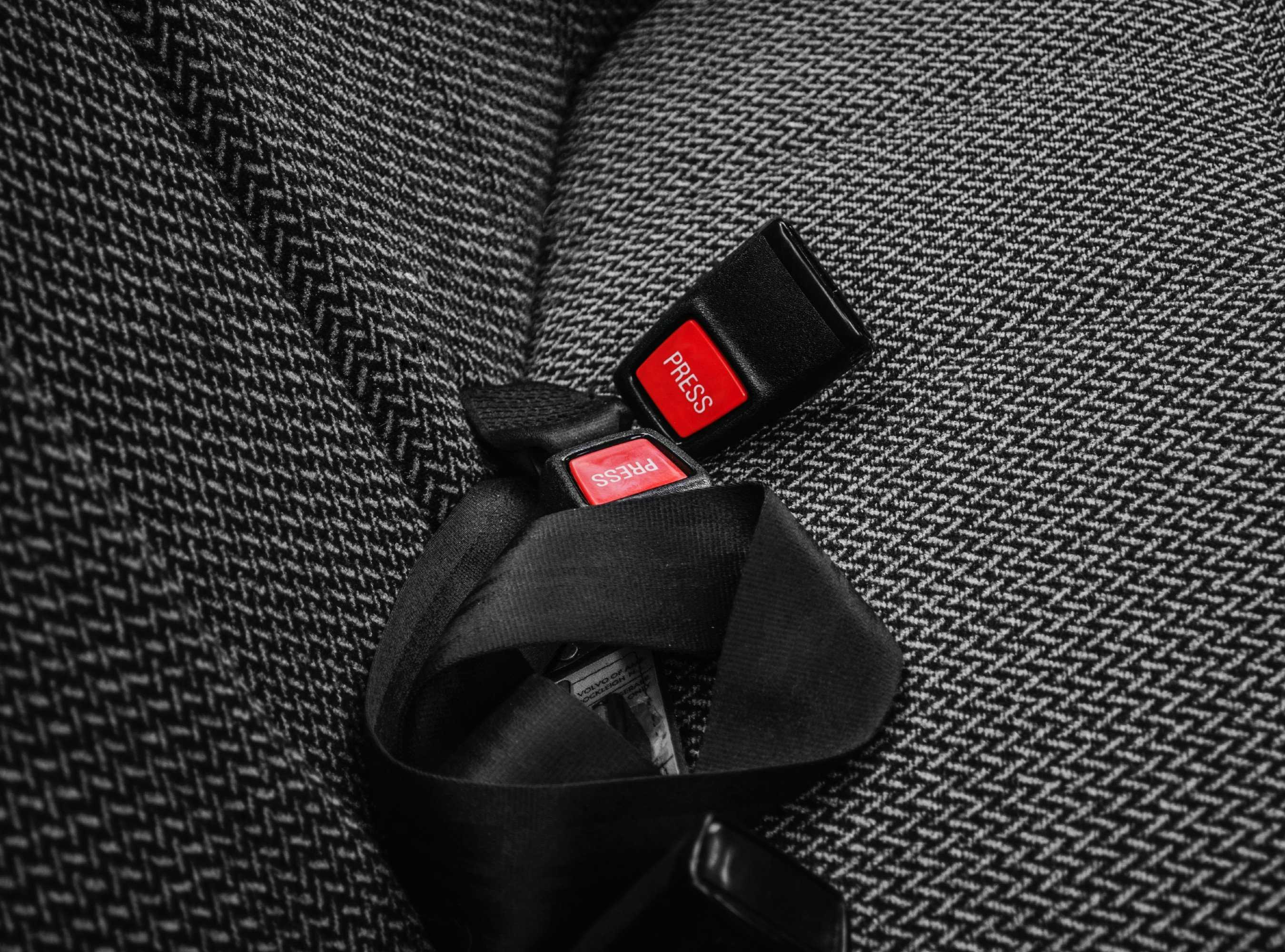Could Seat Belt Extenders be to Blame for Car Accident Injuries?
Seat belt extenders help with fit but raise safety concerns, especially for children in booster seats. Are seat belt extenders safe? Research is ongoing.
Updated on
Seat belt extenders look like smaller versions of seat belts. As their name suggests, they help people who need more room beyond the confines of a typical seat belt. In the mid-2010s, however, many vehicle designs began mounting rear seat buckles flush with the seat itself. This design made it nearly impossible for children riding in booster seats to buckle their own seat belts. Many families installed seat belt extenders that allowed children to reach the buckle, helping them develop independence and dexterity. Now, questions abound regarding seat belt extender safety for child passengers.
Product Liability Lawsuits Against Extender Manufacturers
In 2013, a Tennessee six-year-old suffered severe brain trauma after his family’s Nissan was struck by a drunk driver. The boy’s booster seat was held in place with a seat belt extender manufactured by the Ford Motor Company. In response to the incident, the family sued Ford. The family alleged the company knew the devices were not safe for child seats. Furthermore, the family alleged the product was being actively marketed to parents as suitable for use with child seats.
Are Seat Belt Extenders Safe?
Many seat belt extenders on the market tout compliance with Federal Motor Vehicle Safety Standards (FMVSS) 209 and 302. Section 209 sets out standards for occupancy, restraint requirements, hardware, adjustment methods, and release mechanisms. It covers the parts of the seat belt itself, such as the buckle, button, latch, and webbing. Section 302 governs the flammability of materials used in vehicle interiors. This section mandates seat belts and extenders meet certain standards of fire resistance.
Section 208 of the FMVSS governs seat belts as well. In 2000, the National Highway Traffic Safety Administration (NHTSA) considered a petition to amend Sections 208 and 209 to require that seat belts be made longer than then-existing standards required. In its research, the NHTSA found that over 85% of then-existing vehicle seat belts were already longer than the minimum requirement. They also found that auto manufacturers often provided seat belt extenders free of charge to those who required them.
The NHTSA also declined to change the seat belt length requirement. This was largely due to agency concerns that longer belts or seat belt extenders could have negative safety consequences. The agency cited data that indicated a 12% increase in head injuries when the belts were longer. In addition, the NHTSA said seat belt extenders could prevent a seat belt from providing proper torso restraint. The data also indicated that seat belt extenders could contribute to abdominal injuries by pulling the belt above the hips.
Unanswered Questions About Seat Belt Extender Safety
Currently, the NHTSA recommends that adults who need roomier seat belts obtain a seat belt extender from their vehicle’s manufacturer. However, the agency does not mention using seat belt extenders with booster seats. Seat belt extenders, thus, pose a number of unanswered questions, particularly when it comes to their use by children.
Current research supports the use of booster seats, claiming the added “boost” positions seat belts correctly across a child’s body. In other words, a booster seat helps a seat belt work correctly in a crash. However, a seat belt extender may cause restraint issues when added to an adult’s seat belt. Some studies indicate that the belt may ride too high on the abdomen or not sit centered on the torso. These concerns over seat belt positioning caused the NHTSA to reject the requirement for longer seat belts. These same problems can occur when a child in a booster seat uses a seat belt extender.
In addition, using seat belt extenders made by a different manufacturer than the vehicle itself puts passengers at risk. Mismatching the vehicle and extender could prevent the seat belt extender from fully latching. The child in the Tennessee case was using a seat belt extender manufactured by Ford. However, the injuries occurred while a child riding in a Nissan.
The NHTSA recommends adults use a seat belt extender that comes from their vehicle’s manufacturer. However, many people purchase and sell extenders without reference to the vehicle manufacturers.
The Role of Expert Witnesses in Potential Seat Belt Extender Safety Litigation
In product liability cases involving seat belt extenders, experts can discuss issues of extender compatibility and conditions for proper use.
Experts in the manufacture and design of seat belts may be asked to study an extender involved in an accident. They may evaluate whether the extender latched correctly or whether any defect in its materials might have contributed to the harm caused.
Experts in body mechanics and crash-related injuries may also be asked to contribute to these cases. These experts are likely to focus on the injuries suffered in the crash itself. They may also discuss what role, if any, the seat belt extender played in causing or worsening injuries sustained.
Presently, there isn’t much research on the effects of seat belt extender use during an accident. As research unfolds, attorneys and experts may find more concrete answers to the questions these cases pose.
Frequently Asked Questions
Are seat belt extenders safe for children in booster seats?
No, seat belt extenders are not safe for children in booster seats. They can alter the fit of the seat belt, reducing its effectiveness in a crash. Instead, ensure the booster seat positions the seat belt correctly across the child's shoulder and lap for optimal safety.
What are the risks of using seat belt extenders in car accidents?
Seat belt extenders can increase injury risk in car accidents if they alter the seat belt’s fit, reduce effectiveness, or fail under crash forces. Using non-manufacturer-approved extenders may compromise safety and airbag function. Always use OEM-approved extenders for proper protection.
Can seat belt extenders cause product liability lawsuits?
Yes, seat belt extenders can cause product liability lawsuits if they are defective, improperly designed, or fail to function correctly, leading to injury or death. Manufacturers, distributors, or sellers may be held liable if the extender does not meet safety standards or misleads consumers about its proper use.
About the author
Dani Alexis Ryskamp, J.D.
Dani Alexis Ryskamp, J.D., is a multifaceted legal professional with a background in insurance defense, personal injury, and medical malpractice law. She has garnered valuable experience through internships in criminal defense, enhancing her understanding of various legal sectors.
A key part of her legal journey includes serving as the Executive Note Editor of the Michigan Telecommunications and Technology Law Review. Dani graduated with a J.D. from the University of Michigan Law School in 2007, after completing her B.A. in English, summa cum laude, in 2004. She is a member of the Michigan State Bar and the American Bar Association, reflecting her deep commitment to the legal profession.
Currently, Dani Alexis has channeled her legal expertise into a successful career as a freelance writer and book critic, primarily focusing on the legal and literary markets. Her writing portfolio includes articles on diverse topics such as landmark settlements in medical negligence cases, jury awards in personal injury lawsuits, and analyses of legal trial tactics. Her work not only showcases her legal acumen but also her ability to communicate complex legal issues effectively to a wider audience. Dani's blend of legal practice experience and her prowess in legal writing positions her uniquely in the intersection of law and literature.
Subscribe to our newsletter
Join our newsletter to stay up to date on legal news, insights and product updates from Expert Institute.
Sign up nowA Sample Voir Dire: How To Qualify An Expert Witness
Download free white paperChallenging Opposing Experts: Advanced Research Techniques
Download free white paperCross Examining Expert Witnesses: The Ultimate Guide
Download free white paper
Subscribe to our newsletter
Join our newsletter to stay up to date on legal news, insights and product updates from Expert Institute.



